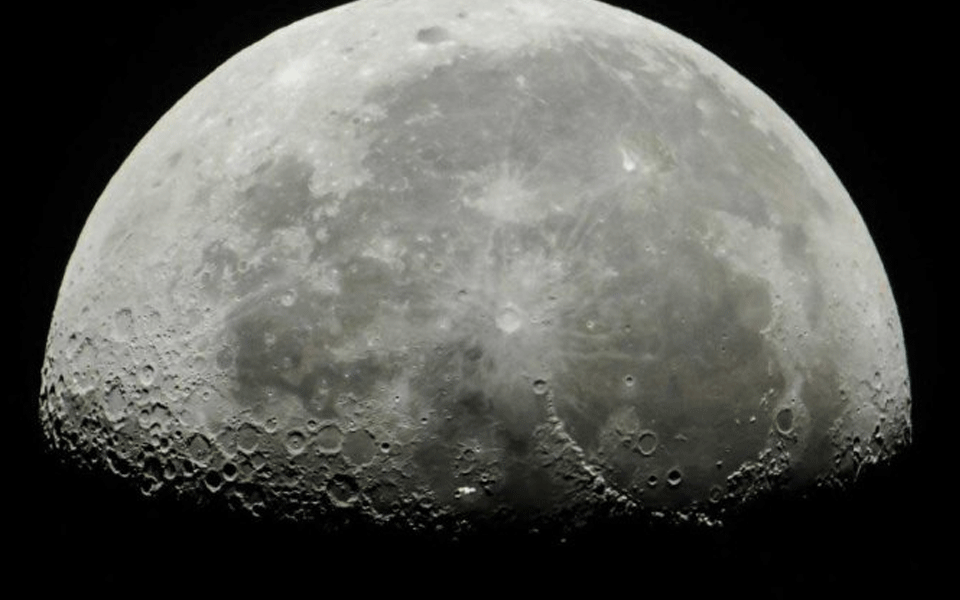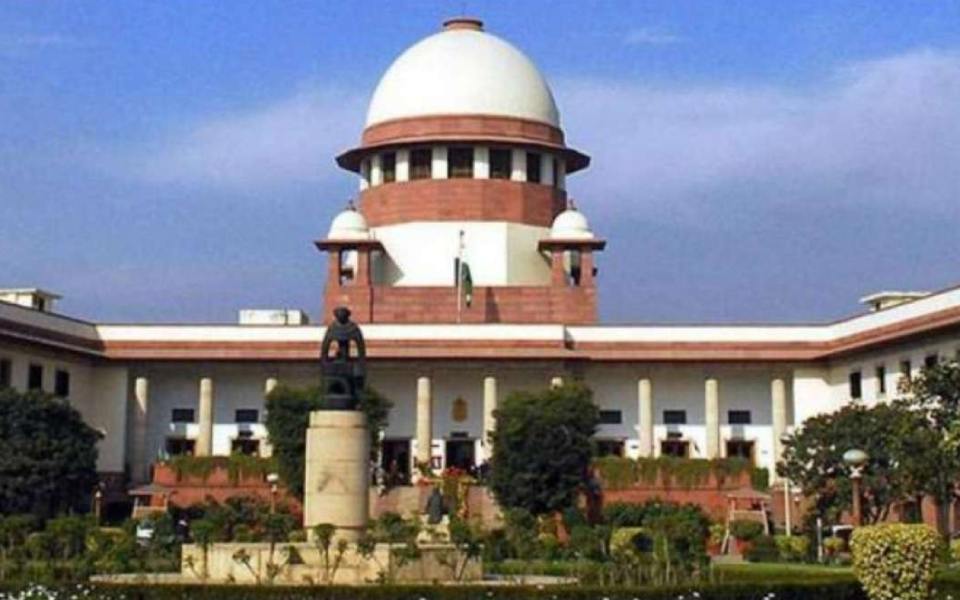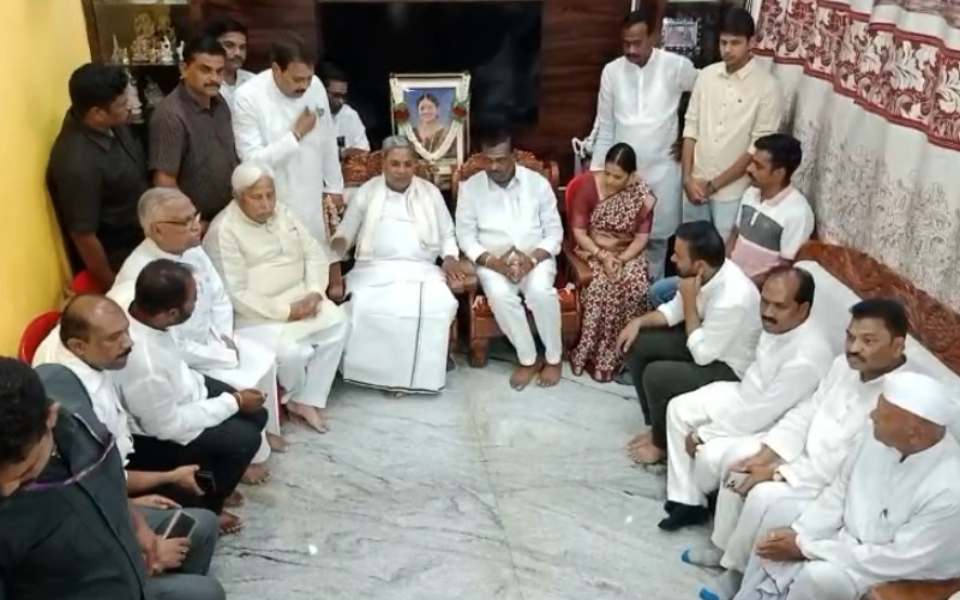Bengaluru: A team of researchers from the Indian Institute of Science (IISc) and the Indian Space Research Organisation (ISRO) has developed a sustainable process for making brick-like structures on the moon, according to IISc.
It exploits lunar soil, and uses bacteria and guar beans to consolidate the soil into possible load-bearing structures, Bengaluru-based IISc said in a statement.
"These space bricks could eventually be used to assemble structures for habitation on the moons surface, the researchers suggest," it said.
"It is really exciting because it brings two different fields biology and mechanical engineering together," says Aloke Kumar, Assistant Professor in the Department of Mechanical Engineering, IISc, one of the authors of two studies recently published in'Ceramics International'and'PLOS One'.
Space exploration has grown exponentially in the last century. With Earth's resources dwindling rapidly, scientists have only intensified their efforts to inhabit the moon and possibly other planets.
The cost of sending one pound of material to outer space isaboutRs 7.5 lakh, according to the statement.
The process developed by the IISc and ISRO team uses urea which can be sourced from human urine and lunar soil as raw materials for construction on the moon's surface, it said.
This decreases the overall expenditure considerably.
The process also has a lower carbon footprint because it uses guar gum instead of cement for support. This could also be exploited to make sustainable bricks on Earth, it was stated.
Some micro-organisms can produce minerals through metabolic pathways.
One such bacterium, called'Sporosarcina pasteurii ' produces calcium carbonate crystals through a metabolic pathway called the ureolytic cycle: it uses urea and calcium to form these crystals as byproducts of the pathway.
"Living organisms have been involved in such mineral precipitation since the dawn of the Cambrian period, and modern science has now found a use for them," says Kumar.
To exploit this ability, Kumar and colleagues at IISc teamed up with ISRO scientists Arjun Dey and I Venugopal.
They first mixed the bacteria with a simulant of lunar soil.Then, they added the required urea and calcium sources along with gum extracted from locally-sourced guar beans.
The guar gum was added to increase the strength of the material by serving as a scaffold for carbonate precipitation.
The final product obtained after a few days of incubation was found to possess significant strength and machinability, the statement said.
"Our material could be fabricated into any freeform shape using a simple lathe.This is advantageous because this completely circumvents the need for specialised moulds a common problem when trying to make a variety of shapes by casting.
This capability could also be exploited to make intricate interlocking structures for construction on the moon, without the need for additional fastening mechanisms," explains Koushik Viswanathan, Assistant Professor in the Department of Mechanical Engineering, IISc, another author.
ThePLOSOnestudy, conceived by Rashmi Dikshit, a DBT-BioCARe Fellow at IISc, also investigated the use of other locally available soil bacteria in the place of 'S.pasteurii'.
After testing different soil samples in Bengaluru, the researchers found an ideal candidate with similar properties:'Bacillus velezensis'. Just a vial of'S.pasteurii' can cost Rs 50,000;'B.
velezensis' on the other hand, is about ten times less expensive, the researchers say.
"We have quite a distance to go before we look at extra-terrestrial habitats.Our next step is to make larger bricks with a more automated and parallel production process," says Kumar.
"Simultaneously, we would also like to further enhance the strength of these bricks and test them under varied loading conditions like impacts and possibly moonquakes."
Let the Truth be known. If you read VB and like VB, please be a VB Supporter and Help us deliver the Truth to one and all.
New Delhi, Apr 25: A husband has no control over his wife's 'stridhan' (woman's property) and while he may use it during the time of his distress, he has a moral obligation to return it to his wife, the Supreme Court has reiterated while directing a man to pay Rs 25 lakh to a woman in return for her lost gold.
The woman in this case claimed that 89 sovereigns of gold were gifted to her by her family at the time of marriage. Additionally, after the wedding, her father gave a cheque for Rs 2 lakh to her husband.
According to the woman, on the first night of their marriage, the husband took custody of all her jewellery and entrusted the same to his mother under the garb of safekeeping. She alleged that all the jewellery was misappropriated by the husband and his mother to discharge their pre-existing financial liabilities.
The Family Court, in 2011, held that the husband and his mother had indeed misappropriated the appellant's gold jewellery and that she was entitled to recoup the loss caused to her by the said misappropriation.
The Kerala High Court, while partly setting aside the relief granted by the family court, held that the woman had not been able to establish misappropriation of gold jewellery by the husband and his mother.
The woman then moved the Supreme Court against the high court order.
A bench of justices Sanjiv Khanna and Dipankar Datta said 'stridhan' property does not become a joint property of the wife and the husband, and the husband has no title or independent dominion over the property as its owner.
"Properties gifted to a woman before marriage, at the time of marriage or at the time of bidding farewell or thereafter are her stridhan properties. It is her absolute property with all rights to dispose at her own pleasure.
"The husband has no control over her stridhan property. He may use it during the time of his distress but nonetheless he has a moral obligation to restore the same or its value to his wife," the bench said, while referring to an earlier judgment on the issue.
The apex court said matters of matrimony can rarely be said to be simple or straightforward hence, human reaction according to a mechanical timeline before the sacred bond of marriage is severed is not what one would expect.
"Divorce, majorly, in Indian society is still considered a stigma, and any delay in commencement of legal proceedings is quite understandable because of the attempts made to have the disputes and differences resolved; more so, in a case of the present nature, when the appellant was faced with the imminent prospect of termination of her second marriage.
" Even otherwise, the appellant did not present before the Family Court a time barred claim. Doubting the bona fide of the appellant, on facts and in the circumstances, was thus not called for," the bench said.
The top court said the very concept of marriage rests on the inevitable mutual trust of the spouses, which conjugality necessarily involves and to assume that the woman from day one did not trust the husband is rather improbable.
"The High Court, thus, failed to draw the right inference from facts which appear to have been fairly established. That apart, we have neither been shown nor do we know of any binding precedent that for a claim of return of stridhan articles or money equivalent thereof to succeed, the wife has to prove the mode and manner of such acquisition.
"It was not a criminal trial where the chain of circumstances had to be complete and conclusively proved, without any missing link. Undisputedly, the appellant had brought to the matrimonial home sufficient quantum of jewellery, which she wore during the marriage and as is evidenced from photographs," the bench said.
The apex court said the woman had successfully initiated action towards recovery of money in lieu of 89 sovereigns of gold, which in the year 2009 was valued at Rs 8.90 lakh.
"Mere upholding of the decree of the Family Court at this distance of time, without anything more, would bring about injustice to her. Bearing in mind the passage of time, the escalation in cost of living, and in the interest of equity and justice, we deem it fit in exercise of power conferred by Article 142 of the Constitution of India to award to the appellant a sum of Rs 25,00,000," the bench said.





